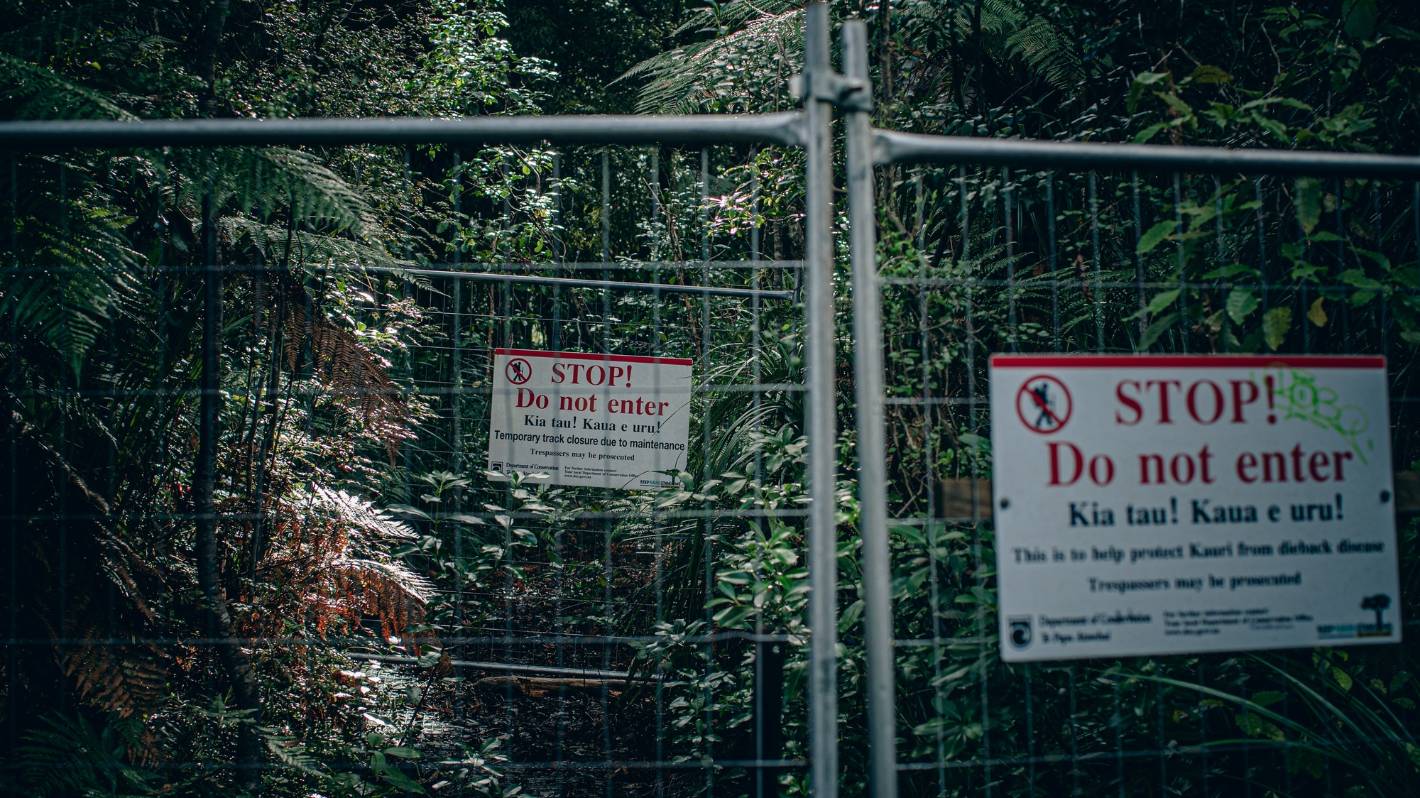Kauri are some of New Zealand’s most important taonga – both ecologically and culturally. But the trees are being killed by incurable kauri dieback disease – caused by a pathogen called Phytophthora agathidicida – and the fight to save them has been slow and convoluted. Stuff senior journalist Denise Piper and visual journalist Jason Dorday investigate what is happening to save kauri while they still stand.
Kauri dieback is the greatest threat to conservation in northern New Zealand, according to Jack Craw, Northland Regional councillor and former Auckland Council biosecurity manager.
“We’re in a battle for death here,” he said, talking about how a single organism could wipe out the iconic kauri.
But leadership on the issue has been lacking and science progress has been slow, Craw said.
READ MORE:
* Election 2020: Green Party promises $50 million for kauri tree protection
* Wait goes on for government’s National Pest Management Plan for kauri dieback
* Lack of government funding puts kauri dieback fight in danger
The fungus-like pathogen causing incurable kauri dieback, Phytophthora agathidicida or PA, was first noted on Great Barrier Island in 1972, but its threat was not recognised until 2006 when signs of the disease were spotted in Auckland’s Waitākere Ranges.
A Kauri Dieback Programme started in 2009, but problems had included in-fighting, uneven funding levels between regional councils and a lack of compliance on the ground, he said.
Jason Dorday/Stuff
Closing tracks helps stop the spread of kauri dieback, but compliance with these mostly voluntary rules has been low.
The programme was “an unmitigated disaster”, then Forestry Minister Shane Jones said in late 2017, announcing the Government’s intention for a National Pest Management Plan for PA.
The plan was the strongest biosecurity tool available in Aotearoa and was meant to be the Government’s urgent action against the pathogen, which can be spread with less than a pinhead of soil.
But nearly five years on, the 10-year plan is yet to be introduced.
All of that is about to change, according to Alan McKenzie, the manager for Biosecurity New Zealand’s newly formed Tiakina Kauri (Kauri Protection) agency.
Jason Dorday/Stuff
Wellington-based Alan McKenzie, manager of Biosecurity New Zealand’s Tiakina Kauri programme, says national leadership and a National Pest Management Plan for kauri dieback will make a difference.
“We will provide leadership and co-ordination for kauri protection across kauri lands, and implement the National Pest Management Plan with a strong collaborative, Treaty of Waitangi approach,” he said.
Based in Wellington where there are no kauri trees, McKenzie started his role in April 2021 and has nine staff mostly based in kauri lands – an area where the trees naturally grow, from Kawhia north.
“The right things are in place for a good, aggressive effort in kauri protection.”
The National Pest Management Plan will be implemented in August, replacing the problematic voluntary compliance with 12 rules, backed by fines of up to $5000 for an individual or $15,000 for a company.
Jason Dorday/Stuff
The height and scale of Tāne Mahuta in Northland’s Waipoua Forest can often take people’s breath away.
The plan compels people to clean their shoes before and after entering kauri forests, report sick kauri, not release animals in kauri forests and apply management plans for high-risk activities.
It will be the first National Pest Management Plan which impacts a species considered taonga by Māori, with other plans helping the likes of cattle and kiwifruit, McKenzie said.
The plan involved extensive consultation, then was delayed for a year by the Government’s Covid-focused 2020 Budget.
Finally, in May 2021, the Government announced $32 million over five years to implement the National Pest Management Plan, with Tiakina Kauri allocating the funding to on-the-ground workers, including mana whenua.
Jason Dorday/Stuff
Even in central Wellington, where there are no kauri trees to be found, the importance of kauri is clear, says Tiakina Kauri manager Alan McKenzie.
The funding is “not enough” but it is a start, according to Green conservation spokesperson Eugenie Sage.
The funding for a national strategy is just a fraction of the $107 million Auckland Council is spending from 2018 to 2028, thanks to a natural environment levy on its one million ratepayers.
The Green party wanted $50m over two years, and Sage wants to see the funding ramped up in Budget 2023.
Kauri are such an icon for New Zealand, visiting Tāne Mahuta and Te Matua Ngahere – both in Northland’s Waipoua Forest – are two of Lonely Planet’s top 10 things to do in Aotearoa, she points out.
Anyone can do their bit to stop kauri dieback.
Exactly how much is needed will become clearer once the plan is implemented, she said.
And while it has taken a long time to get the plan up and running, there have been many moving parts, Sage admits.
Biosecurity Minister Damien O’Connor is defensive about the Government’s kauri protection work, despite being unavailable for an interview over Stuff’s four-month investigation.
“We have not stood still on protecting kauri,” he said in a written statement.
“Ensuring the survival of these iconic trees for future generations means doing everything we can to prevent the potential spread of kauri dieback disease.
“There has been significant government commitment over the years for science and research efforts to combat kauri dieback, and for education and behaviour-change initiatives.”
But O’Connor said implementing the National Pest Management Plan would be a huge step forward for the protection of this taonga species.
The plan would enable a prioritised and managed response to PA, while there was still an opportunity to contain it, he said.
This series produced with funding from Bruce Jesson Foundation.




